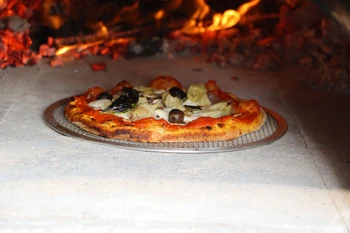The table
When you prepare your pizza dough, allow for 1 dough piece of around 200g per pizza.Then count on 1 or 2 pizzas per person, still in 200g dough pieces.
Put one or more jars of pizza sauce on the table, and as many ingredients as possible on plates or in bowls, so that everyone can compose their pizzas to their own taste.
Here are a few ideas:
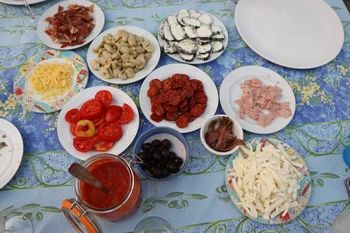
- Mozzarella, of course, but also other cheeses: small cubes of feta, grated Comté or Emmenthal, thinly sliced goat's cheese, etc.
- Fresh basil in season, oregano, herbes de Provence
- Spiced olive oil or olive oil with herbs
- Pitted olives, anchovies
- Ham, smoked ham, chorizo, grilled smoked bacon
- Fresh mushroom strips, artichoke hearts, thin slices of fresh tomato
- Smoked salmon flakes, shrimps, shelled mussels
- Heavy cream, raw eggs, pesto sauce
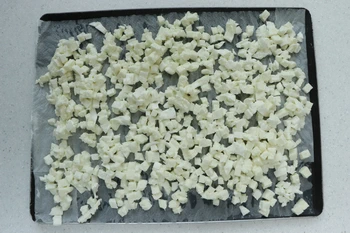
A word of warning about the mozzarella: it shouldn't be fresh, but rather dry.
If you have fresh mozzarella balls, the day before or even 2 days before, cut them into small cubes, place them on a sheet of absorbent paper on a baking sheet, and leave them in the fridge, uncovered, until used.
Baking pizzas in a bread oven
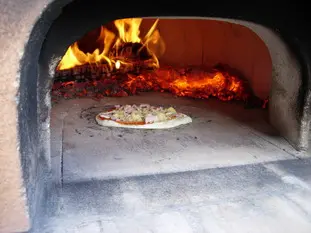
It's very difficult, especially for an apprentice pizza maker (like me), to get a disk of fresh dough topped with pizza sauce and all its ingredients, and therefore very soft, into the oven correctly, without risking drama: pizza sticking to the peel, folding up in the oven, ingredients dripping, etc. To avoid this, I suggest two methods.
To avoid this, I suggest 2 methods:
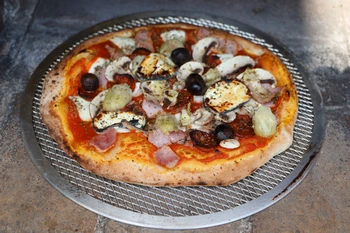
1) Use aluminum pizza racks, these light, thin racks allow you to bake the pizza, practically in contact with the oven floor.
A few tips:
- Just before placing the freshly rolled-out dough on the rack, brush it with a little olive oil to prevent sticking.
- In a wood-fired oven, halfway through baking, remove the rack and turn it halfway round before placing it back in the oven for a more even cooking.
- At the end of cooking, remove the pizza + rack, then put the pizza back in the oven, without the rack, for 1 minute to finalize the underside.
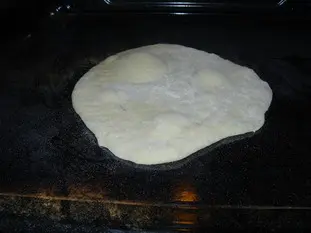
2) the "Tchéou" method (from the pseudonym of its inventor), which consists in lightly pre-cooking the dough bases on their own before serving them to guests.
You can do this, in an electric oven for ease of use, and well before the meal, by rolling out the dough and putting it in the oven for around thirty seconds, directly on the oven floor, just enough to sear the underside and make it barely crusty. With this preparation, the pizzas, once topped, glide much better over the peel and are much easier to put in the oven.
Tip: pre-cook all your dough before serving, and place the circles on a rack on the table within easy reach of your guests.
When you're ready to put your pizzas in the oven, try not to flour, or only lightly, the shovel, as this flour will settle on the base, burn on contact and give your pizzas an unpleasant taste and color.
When baking in the oven, use the rable to push the embers away from the bottom and sides of the oven, to free up space on the hearth. Give the oven a few taps with the flat of the shovel to clear the hearth of ashes and small pieces of remaining embers, and start cooking.
Be careful: with a hot oven, baking takes about 2 minutes, so you need to be very careful... (the thing that happens most often with me is that my friend gets up from the table to see his or her pizza cooking, and chats or drinks with you: you think of something else, and bim! you unload an overcooked or burnt pizza.

Here's a tip: while the pizza is in the oven, take advantage of this brief moment to heat up the plate containing the uncooked pizza.
As pizza cools down quite quickly, a warm plate will help to limit this a little
If you take a break during the meal, spread the embers over the sole again to distribute the heat evenly during the break.
If the soleplate gets dirty with use, because small pieces of ingredients or flour have stuck to it, take a "pyrolysis" break: with the rable, spread the embers over the stains for 5 minutes, then push them back to the bottom to continue cooking => all nice and clean again....
Cooking in a conventional oven
You can also make good pizzas in your kitchen oven, if you just follow two simples rules:- Oven should be very hot (240/250°C), preheat it at least 30 minutes before starting to cook.
- Put pizzas directly on the oven sole, if possible without any baking sheet or mould. It's important that the pizza should be as close as possible to the high temperature at the bottom of the oven so that it cooks rapidly.
Sweet pizzas
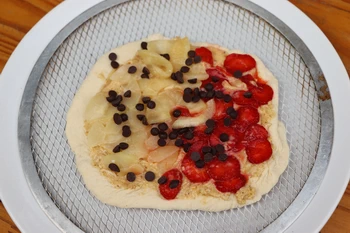
You can make a complete meal out of pizzas, finishing with "dessert" pizzas, i.e. sweet pizzas.
It's the same principle as for classic pizzas, but to top the dough bases, we use almond cream (a thin layer) or a little fresh cream sprinkled with cane sugar or brown sugar, and we spread on the whole small cubes of fresh fruit, dried fruit, chocolate chips, etc.
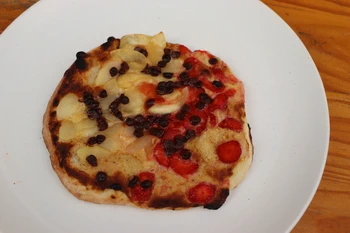
The cooking process is the same as for classic pizzas.
Bread oven
Building a bread oven was until a few years ago a job for the professionals. But now you can buy a kind of kit which allows you to build your own bred oven without professional masonry know-how. You should know that the kits only provide the main part of oven, the hearth, where you light the fire...October 15th 20241.19 M3.6
Films and papers in the kitchen
It's now fairly easy to find a range of papers and plastic films that are invaluable, and sometimes indispensable, kitchen aids. Here's a quick overview of the main products available, and what you can and can't do with them.August 29th 2023606 K 93.6
Ice-cream and sorbets
Making homemade ice cream may seem complex, but with the right methods and a few tricks, you can achieve a creamy texture and incomparable flavors. On this page, we'll be revealing the secrets of successful homemade ice cream, guiding you step by step through the various stages of preparation. ...August 12th 2024465 K4.0
Making your own bread
You'll find a whole range of bread and pastry recipes on this site, but before you get started, perhaps you'd like to know more about the subject, get some tips and tricks, and find out what the main mistakes beginners make? If so, this page is for you.August 22th 2024576 K 63.9
Random menu...
This page presents you with a random 3-course menu: a starter, a main course and a dessert, based on the recipes on the site. You can change each dish individually, or all 3 at once, or request a menu that does not contain certain ingredients of your choice.October 27th 2024968 K3.9
